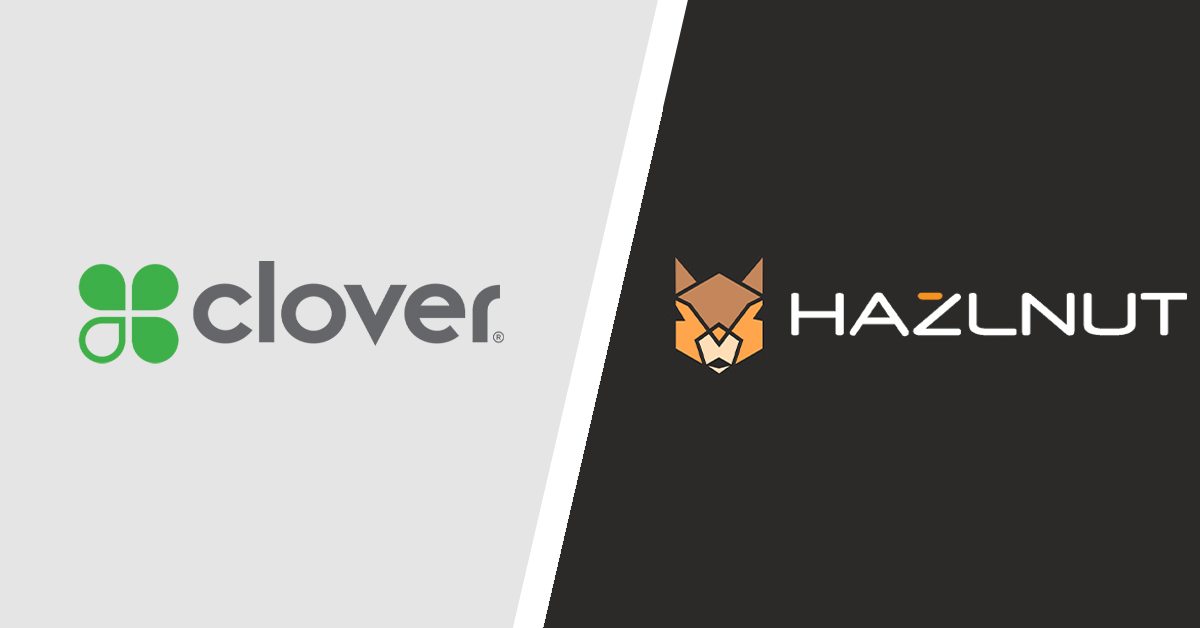If you’re thinking about getting set up with Clover Online Ordering, it’s a good idea to check out Hazlnut Online Ordering too. The research that you do will help make sure you’re going with the right provider. This series offers a fair and honest look at how Hazlnut compares to other leading online ordering systems. In this installment, we’re taking a look at Clover Online Ordering.
At their roots, these platforms have some similarities. They both allow customers to browse the menu and place orders, they both operate without any commission fees, and they both use the existing items in your Clover to build the menu. Both platforms operate as an external link that can be posted on your website, which allows you to use them regardless of the website provider you use.
Let’s look at both platforms’ pros and cons and discuss the best fit for your business.
Clover Online Ordering
Pros:
Free: Easily the strongest selling point for Clover’s online ordering is the price point. If you’re wondering does Clover charge a monthly fee, it doesn’t. You can’t beat free and having an option like this available during the pandemic has saved many businesses from going under. Clover’s Google integrated partner, The ordering app, charges a 1.5% fee per transaction and allows customers to access the menu through a button on Google.
How to Set Up Clover Online Ordering
Quick set up: For those looking to get something in place as soon as possible, if you’re wondering how to set up Clover Online Ordering, it can be set up in as little as 10 minutes. Clover copies over your existing inventory and then allows you to make changes from the pre-built menu.
No commitments: As easily as you can get Clover’s ordering set up, you can cancel the service. This makes it a good starting point and something that you can upgrade from at any time.
Manage from existing Clover Dashboard: Because this service is available directly from Clover, it’s all managed from the same Clover Dashboard where you currently make inventory changes.
Cons:
Not branded: Clover’s platform is very clearly a Clover product and does not allow for a company’s logos or colors to be used on the page. While this allows them to keep costs down, it can be off-putting to customers who may feel like they’re ordering from a third-party as opposed to directly from the business.
Lack of features: The old adage “You get what you pay for” rings true here. Clover’s system is very basic. There are no bells and whistles, lacking in areas like upselling, dynamic prep time, cash payments, modifier customization. It does what it’s supposed to: Take orders and accept payments. But unfortunately, not much else.
How Much Does Clover Charge per Transaction?
Transaction Fees: If you’re wondering how much does Clover charge per transaction, the fee is 1.5% per transaction. While it’s standard to have a transaction fee for this type of service, this is something for you to be aware of.
Manual editing: The set-up is quick and matches Clover directly, but then it’s up to you to make changes as you go. In most situations, a Clover’s inventory contains shorthand names or modifier groups that are designed to make things easier on the staff, but these aren’t always ideal for online ordering. This can cause some headaches in the set-up process, and Clover’s general support line tends to be an unreliable source for problem-solving.
Lack of personalized support: This is one of the biggest differences between these two services. While Hazlnut provides you with a personal onboarding rep and a support line that gets you directly to an expert, Clover requires you to go through their general support line, which tends to be very unreliable.
Online Ordering Clover
Limited to one printer: When you go with online ordering through Clover, their system limits you to using only 1 printer for all online orders. This can be a pain in the event that a business has multiple stations and printers and creates a disconnect between online orders and standard, in-store transactions.
No pictures: Pictures are extremely important whenever someone shops online, but especially so with food ordering. Not being able to add pictures can hurt customer engagement and can result in a lower average ticket size. According to DoorDash, menus with pictures receive 25% more orders.
Hazlnut Online Ordering
Pros:
Branded: One of the biggest selling points for Hazlnut is that it’s a completely branded solution. We use your logos, colors, and fonts to make the page look and feel like you built it yourself. This adds a personal touch to the order process and allows you brand to be represented well every time an order is placed.
Food pictures: Hazlnut allows you to add food pictures for every item and category, which can really help customers to engage with the menu more and can even increase ticket size by 30%. In contrast, when it comes to online ordering Clover does not allow you to add pictures.
Customizable: While Hazlnut’s system uses the existing items and modifiers in Clover, it’s not limited to how these things are display on Clover. From pictures, descriptions, and modifiers to the display order and categories items are displayed in, Hazlnut allows for nearly unlimited menu customization.
1-on-1 support and hands-off set-up: After signing up with Hazlnut, you’re assigned an onboarding specialist to work with throughout the entire set-up process. Based on the information you provide, that specialist will help set up the menu for you, and adjust it based on any feedback you give. That same person will be a direct contact for you in the future if you run into any issues.
Custom printer set-up: In direct contrast to Clover Online Ordering’s printer limitations, Hazlnut allows you to utilize any printers you have and can even set things up to mirror exactly what you’re using in-store, blurring the lines between these different order types and making these transactions feel like the normal in-store transactions that the staff is used to.
Dynamic upselling: Hazlnut has the ability to offer customers an item at the end of each transaction. It’s called “dynamic” because the item that gets offered can change based on what’s in the customers cart. This allows you to pair items that go well together and avoid offering a customer something they already have in their cart.
Cons:
Price: Hazlnut isn’t the cheapest option out there (starting at $89 a month), and it definitely can’t compete with Clover’s pricing (free). It’s much more so a premium option and if you’re looking for a short-term bare-bones solution, it might not be right for you.
Longer set-up time: Because Hazlnut’s product is more customized and we do the set-up for you, this obviously takes longer than the 10-minute set-up that Clover Online Ordering boasts. Assuming you’re able to get your brand assets to us pretty quickly, we’ll have the ordering page up and running within two weeks, or sometimes sooner, depending on the complexity of your menu.
Conclusion
Both of these solutions have a place in the market, but cater to different groups of people:
Online Ordering Through Clover
Clover’s online ordering is best suited for the extremely cost-sensitive. If you’re in a really tough financial situation and just need a quick fix to survive as a business, this is the solution for you. It’s not flashy or feature-rich, but it could be just what you need to get through a tough season, like we’ve all just experienced in 2020.
Hazlnut’s online ordering is a premium solution best suited for growing brands looking for a customized solution that they’ll never have to upgrade from. The price point is very competitive compared to others in the market. Upgrading to Hazlnut’s All-in package also includes an app, text ordering for restaurants and loyalty program, so it can become the all-in-one solution your brand is looking for.
If you’re interested in learning more about Hazlnut and seeing if it’s a good fit for you, schedule a demo today!







